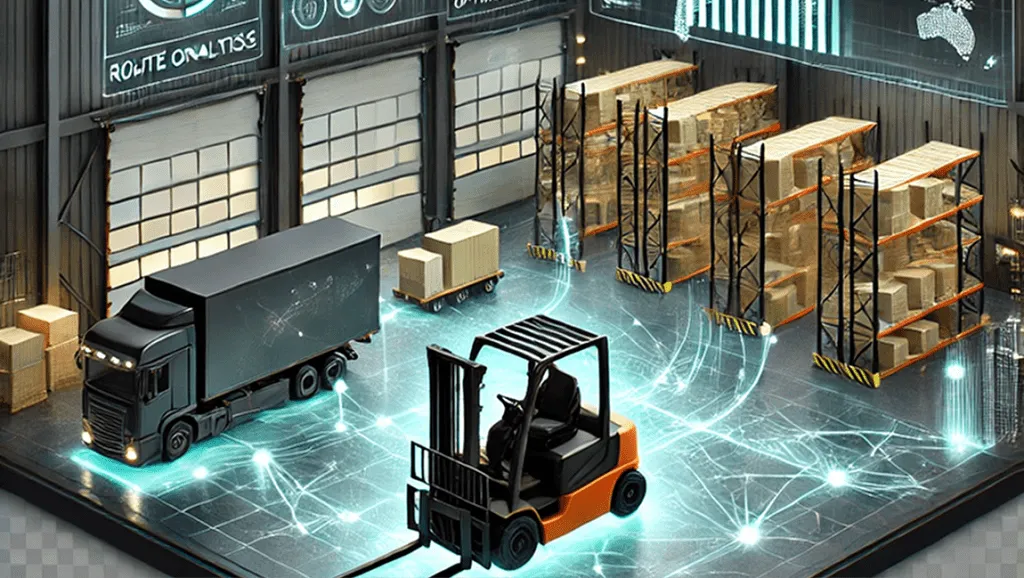Forklift Tracking System
Track. Manage. Optimize.
Gain actionable insights, reduce downtime, and boost efficiency—all without worrying about Bluetooth, UWB, or RFID pilots. LocaXion’s tailored real-time forklift tracking simplifies technical complexities so you can focus on results.

How Forklift Tracking System Can Transform Your Warehouse Operations
Real-time Forklift Visibility and Monitoring
Track forklift locations in real time using UWB and BLE. Gain precise, real-time visibility into forklift movements to prevent unauthorized zone entries, monitor speed compliance, and reduce route deviations. Ensure safe and efficient operations, maintain smooth workflows and minimize risks in high-traffic environments.
- Track movements with UWB/BLE
- Prevent unauthorized access.
- Optimize workflows.
Forklift Anti-Collision System Alerts for Drivers and Pedestrians
Protect operators and pedestrians with real-time anti-collision alerts using UWB and LiDAR. Ensure safety compliance now and reduce workplace accidents.
- Real-time collision alerts
- Ensure safety compliance
- Reduce accidents.
Automate OSHA Compliance and Access Control
Digitize safety checklists and manage operator permissions. Forklift systems ensure only authorized staff operate vehicles safely.
- Enforce OSHA checklists
- Restrict unapproved forklift access
- Strengthen warehouse safety protocols
Use Data to Maximize Fleet Efficiency
Analyze live and historical forklift tracking data to reduce idle time and optimize fleet utilization in your warehouse. Maximize equipment effectiveness, boost productivity and reduce costs today.
- Monitor usage over time
- Minimize idle time
- Reduce costs
Forklift Navigation and Route Optimization Using Live Analytics
Use real-time forklift tracking to plan faster, more efficient routes across the warehouse floor. Reduce travel distances and minimize idle time.
- Optimize navigation automatically
- Reduce unnecessary travel
- Boost operational efficiency


Manage Congestion Across All Vehicles
Track forklift, AGV, and AMR movement data to eliminate traffic jams and improve operational flow. Prevent costly delays and improve workflow efficiency with real-time traffic data.
- Real-time forklift traffic monitoring
- Spot and fix chokepoints
- Improve workflow efficiency
Why Locaxion is the Right Partner for Your RTLS Journey?
100+ Location Intelligence projects
With expertise across over 100 successful projects, we deliver proven solutions for manufacturing and warehousing industries.
15+ years of experience in RTLS
Our team brings extensive expertise in RTLS, digital twins, and smart factory consulting alongside leading industry partners.
Strong Network of Top RTLS
We collaborate with industry-leading RTLS and digital twin providers to create tailored, client-specific solutions.
Why You Should Adopt a Forklift Tracking System in Your Warehouse Today
Smart Tracking & Safety Alerts
Real-time visibility with alerts for unauthorized entry, speed, and route deviations.
OSHA Compliance
Compatibility with OSHA checklists and access control to ensure compliance.
Seamless System Integration
Robust data integration with WMS, MES, and telematics for end-to-end visibility.
Key Benefits of Forklift Tracking System
Reduce Costs with Smarter Tracking
Maximize forklift utilization with location tracking and reduce idle time. Save on operational costs and trim operational waste.
Improve Safety Through Real-Time Systems
Use forklift systems with real-time alerts and anti-collision tech. Protect operators and pedestrians, minimize risks and stay compliant.
Optimize Efficiency with Live Data
Use forklift location tracking to analyze traffic patterns, minimize downtime, and improve productivity. Make informed, data-driven decisions, and modernize warehouse operations.
Key Performance Statistics
Average Increase
Forklift Utilization Rate
Average Reduction
Travel Distance
Average Increase
Labor Productivity
Safety Near-miss Incidents
Maintenance & Repair Costs
Explore Real-Life Use Cases, Guides, and Insights on Forklift Tracking
Lone workers face unique risks every day, from environmental hazards to sudden medical…

31 Mar 2025
In today’s fast-paced industrial environments, ensuring worker safety and optimizing operational efficiency are…

31 Mar 2025
Lone worker tracking is increasingly important across industrial and service sectors where employees…

19 Mar 2025
Optimize Your Warehouse Efficiency with Advanced Forklift Tracking System
Ready to enhance your forklift management and streamline warehouse operations? Let Locaxion provide you with a customized forklift tracking solution designed to meet your business needs and drive operational excellence.
Frequently Asked Questions
What makes real-time tracking crucial for forklift operations?
Real-time tracking is very important. It helps make labor more productive and improves overall equipment effectiveness (OEE). This is done by showing the location, use, and risks of forklifts right away. With this information, people can make better choices, reduce downtime, and improve workplace safety.
How can forklift tracking systems improve warehouse safety?
Forklift tracking systems help make workplaces safer. They do this by allowing only authorized operators to use the forklifts. These systems also keep an eye on how operators are using them. They give real-time visibility of the fleet, showing where each forklift is located. This helps to act quickly when needed, lowers the risk of accidents, and creates a safer workplace.
Can forklift monitoring systems integrate with existing warehouse management software?
Yes, the top forklift monitoring systems are made to easily connect with current Warehouse Management Systems (WMS). They allow real-time data exchange. This helps to streamline workflows, improve inventory accuracy, and boost overall efficiency. Plus, they give a central platform for making decisions based on data.
What is the ROI of investing in a forklift tracking system?
Investing in a forklift tracking system gives good returns by boosting labor productivity and overall efficiency. It helps use the equipment better and improves OEE. You will see fewer accidents and less downtime. With smarter use of resources, you can save a lot and increase profits.

